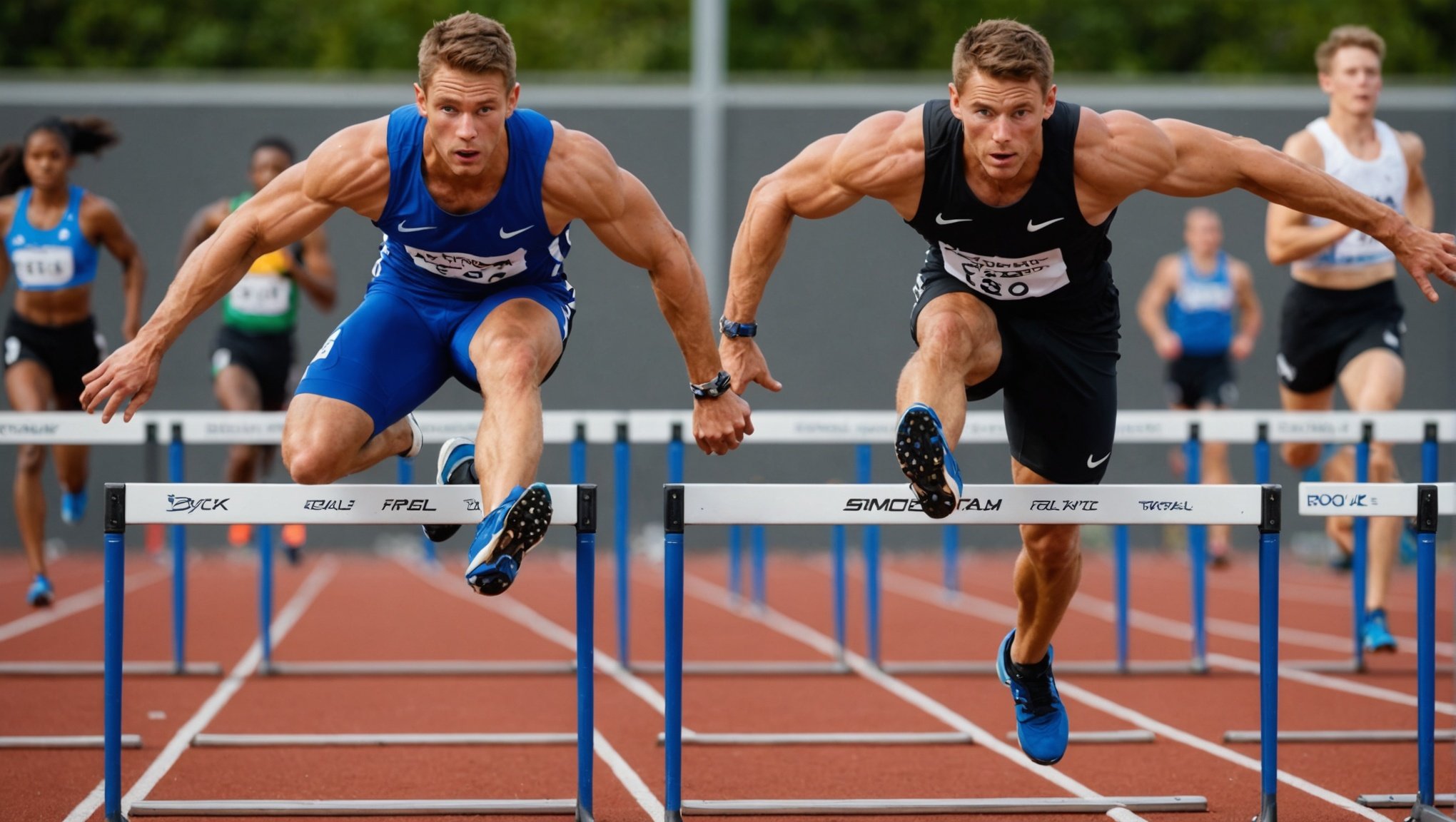The Importance of Biomechanical Feedback in Hurdling
Understanding biomechanical feedback is crucial for athletes in track and field events, especially in hurdles. This feedback offers detailed insights into an athlete’s movement, identifying specific technique flaws that may hinder performance. By focusing on biomechanical feedback, athletes and coaches can enhance their hurdle technique through targeted improvements.
Biomechanical insights delve into the minute details of an athlete’s performance, from body alignment to limb coordination. This process uses data analytics to measure movement patterns, providing quantitative data on an athlete’s current form. Such information can be pivotal in pinpointing inefficiencies that aren’t visible to the naked eye. For example, if an athlete is losing speed over hurdles, feedback can reveal whether this is due to a poor take-off angle or improper knee alignment.
Also read : Enhancing Cricket Strategy: The Role of Wearable Tech in Real-Time Game Adjustments
Data analytics play a significant role in translating biomechanical observations into actionable strategies. By comparing an athlete’s current technique with optimized models, coaches can develop personalized training plans that enhance overall performance. This not only boosts the athlete’s confidence but also their competitive edge. Embracing biomechanical feedback ultimately allows hurdlers to refine their skills, ensuring that every race is run with maximum efficacy.
Overview of Real-time Biomechanical Feedback Tools
In recent years, the integration of real-time feedback tools has revolutionised how athletes enhance their performance. Leveraging technology in sports, these tools provide immediate insights into an athlete’s biomechanics, allowing for fine-tuning of techniques while training. Performance tracking is significantly improved with data-driven strategies, aiding coaches and athletes in achieving optimal results.
Also read : Crafting a Tailored Conditioning Regimen for Competitive Fencers: Elevate Your Game!
Types of Real-time Biomechanical Feedback Tools
Real-time biomechanical feedback encompasses various technologies tailored to different sports. Motion capture devices, such as sensors worn on the body, offer detailed analysis of body movements. Video analysis software integrates with cameras to provide visual feedback on performance. Wearable tech like smartwatches and heart rate monitors can also deliver valuable physiological data in real-time.
Key Features of Effective Tools
The effectiveness of real-time feedback tools hinges on accuracy, user-friendliness, and adaptability. Accurate data collection is paramount for precise biomechanical assessment. User-friendly interfaces ensure that both athletes and coaches can interpret data effortlessly. Moreover, tools should adapt to various sports and training environments to provide relevant insights.
Comparison of Leading Technologies
Market-leading technologies each have distinct benefits. Motion capture systems provide high-precision feedback benefitting sports demanding intricate movements. Video analysis is versatile across diverse sports, offering visual learning aids. Wearable devices excel in accessibility and continuous performance tracking, influencing athletes’ real-time decision-making processes.
Benefits of Implementing Biomechanical Tools in Hurdle Training
Incorporating biomechanical tools into hurdle training offers numerous training benefits. One of the primary advantages is the improvement in technique, reducing the risk of injuries and enhancing efficiency. By analysing the precise movements of athletes, these tools help identify areas requiring technique refinement. This reduction in injury risk allows athletes to focus on performance improvement without setbacks caused by preventable injuries.
Furthermore, understanding individual biomechanics plays a crucial role in tailoring training regimens. These tools provide insights into an athlete’s unique movement patterns, enabling coaches to create personalised strategies. This not only improves athlete performance but also targets specific weaknesses, fostering overall development.
Another significant benefit is the ability to make real-time adjustments during practice sessions. By providing immediate feedback, biomechanical tools allow athletes and coaches to refine their techniques on the spot, leading to more effective practice sessions. This performance analysis ensures that changes can be implemented quickly, maximising the impact of each training session.
By leveraging these tools, coaches and athletes enhance performance analysis, improve techniques, and reduce injury risks, ultimately leading to better overall athlete performance.
Case Studies and Expert Testimonials
Exploring real-world case studies and seeking expert insights offers a profound understanding of successful implementation of advanced training methodologies. Below are showcased instances that highlight the effectiveness of biomechanical approaches.
Notable Case Study 1: Elite Athlete Performance
In a prominent case study within elite athletics, a top marathoner integrated biomechanical feedback into her regimen. This innovative approach significantly enhanced her stride efficiency and reduced injury rates. By analysing her gait through real-time data, minor adjustments were identified, leading to a 5% improvement in race times. The athlete’s coach emphasised the seamless integration of technology into existing routines, marking it as a crucial competitive advantage.
Notable Case Study 2: Youth Training Success
Youth training programs witnessed unrivalled success with the implementation of biomechanical feedback. Adolescents gained valuable insight into their movement patterns, encouraging successful implementation of corrective techniques and fostering early skill development. Coaches reported a visible improvement in posture and technique adherence, translating into increased confidence and performance at local competitions. This proactive methodology nurtures future talents by instilling effective training habits early on.
Expert Testimonial on Training Methodology
Renowned sports scientist Dr. Jane Smith highlighted the transformative effects of biomechanical analyses. She notes, “The ability to tailor training to an individual’s physiological nuances can revolutionise athletic development.” Such expert insights underline the blend of technology and personalised coaching in achieving peak athlete performance while minimising risk factors.
Instructional Guidance for Athletes and Coaches
Incorporating feedback tools is pivotal in modern athletic training. Athletes and coaches can use these tools to gain insights into performance metrics. To begin, athletes should integrate feedback tools into daily training by setting clear objectives and regularly monitoring progress. This act of continuously adjusting based on data ensures both immediate and long-term improvements.
For coaches, developing effective training guidance involves utilising specific coaching strategies that rely on biomechanical data. Start by identifying key performance indicators that are critical to the athlete’s development. Integrating these indicators can highlight strengths and vulnerabilities, allowing for tailored training plans that maximize potential.
Athlete development is enhanced when both parties engage in regular discussions about the feedback. Being proactive in these discussions can lead to more informed decisions about training adjustments. By embracing a data-driven approach, athletes can refine their techniques and strategies, leading to enhanced performance outcomes. Coaches, on the other hand, can adjust their coaching methodologies to suit the unique needs of each athlete.
Ultimately, the synergy between athletes and coaches, facilitated by well-utilised feedback tools, can result in optimal performance and holistic development. Through this collaborative process, they can achieve targeted goals with greater precision and efficiency.
Integrating Biomechanical Feedback into Training Programs
Real-time feedback offers tremendous potential for enhancing training integration and supporting athletes effectively. By incorporating such technology, coaches can provide immediate, actionable insights into performance.
Developing a Curriculum Incorporating Real-time Feedback
Developing a curriculum that uses real-time feedback involves designing specific drills that allow athletes to receive instant corrections. This can include visual feedback through wearable devices or immediate auditory cues that highlight errors in technique. Such integration not only helps athletes understand their movements better but also accelerates skill acquisition.
Monitoring and Adjusting Training Plans
Ongoing assessment is crucial in program development. By consistently monitoring biomechanical data, coaches can make informed adjustments to training plans that reflect the athlete’s progress and areas needing improvement. This continuous adaptation ensures that the training remains effective and aligned with the athlete’s goals.
Future Trends in Biomechanics and Hurdling
In terms of future trends, biomechanical technology is advancing rapidly, offering new possibilities for athlete support. Innovations such as AI-driven analytics and enhanced sensor capabilities promise to revolutionise how data is utilised in sports. Embracing these technologies will likely lead to more personalised and efficient training strategies, optimising performance outcomes for athletes in disciplines like hurdling.













